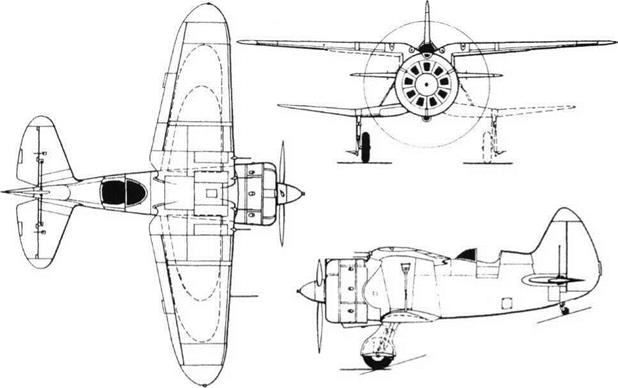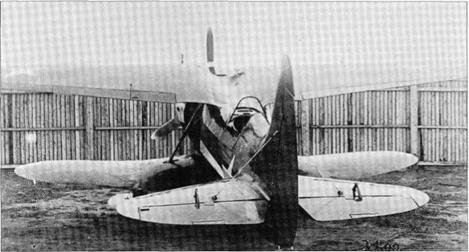Nikitin-Shevchenko IS-1

Purpose: To create a fighter able to fly as a biplane or monoplane.
Design Bureau: OKB-30, Chief Designer V V Shevchenko.
There is some dispute over who was responsible for the experimental IS fighters. Generally ascribed to VV Nikitin, in more recent accounts he is hardly mentioned and all credit is given to Shevchenko who is quoted as saying ‘IS stands for losif Stalin’. In fact, though the conception was indeed Shevchenko’s, he was an NIl-WS test pilot who was occasionally employed by Nikitin. Design of the IS series was carried out in partnership with Nikitin, and IS actually meant Istrebitel Skladnoi, folding fighter. Surprisingly, it was alsogiventheofficialGUAP designation I-220, even though this was also allocated to a high – altitude MiG fighter. The idea was that the aircraft should take off as a biplane, with a short run, and then fold up the lower wing underneath the upper wing in order to reach high speed as a monoplane. Shevchenko promoted the idea in November 1938, getting an enthusiastic response, and therefore in 1939 demonstrated a detailed working model built at the Moscow Aviatekhnikum (MAT). His project captivated Stalin and Beria, who wanted the aircraft flying in time for the October Revolution parade in November 1939. Shevchenko was given 76 million roubles and
facilities at Factory No 156, while the OKB-30 design team eventually numbered 60. The IS-1 was first flown by V Kulesho v on 29 th May 1940, and the lower wings were first folded by G M Shiyanovon 21st June 1940. Shevchenko states that Shiyanov carried out LII testing and completed his report on 9th January 1941. According to Shevchenko, glowing accounts were also written by such famous test pilots as Suprun and Grinchik. In fact, Shavrov records that ‘State tests were considered unnecessary, as the maximum speed was only 453km/h’. As it was so much slower than the LaGG, MiG and Yak fighters, this aircraft was
put into storage after the German invasion, together with the IS-2.
As far as possible the IS-1 resembled the existing production fighter, the I-153. It had the same 900hp M-63 engine, driving a Hamilton VISh propeller of2.8m (9ft 2in) diameter, and apart from the extra ‘wing fold’ lever the cockpits were identical. The airframe was allmetal, the fuselage framework being welded SOKhGSA steel tube, with removable metal panels to the front of the cockpit and fabric aft, while each wing had similar construction for the two spars, but DIG light-alloy ribs and flush-riveted DIG skins. The tail was DIG with
|


fabric covering. After take-off the pilot selected ‘chassis up’, folding the main landing gears inwards by the 60-ata (882 lb/in2) pneumatic system. He could then select ‘wing fold’, whereupon a pneumatic ram and hinged levers on each side folded the lower wing. The inboard half was then recessed into the fuselage and the hinged outer half (which remained horizontal throughout) was recessed into the upper wing to complete its aerofoil profile. The planned armament was four ShKAS in the inner gull-wing part of the upper wing. There was no cockpit armour.
Though it may have seemed a good idea, the realization was a disappointment. Apart from the overall inferiority of the IS-1 ‘s performance, it was nonsense to reduce wing area in an aircraft needing the maximum possible combat agility, and moreover to try on the one hand to increase wing area for take-off
and landing whilst simultaneously leaving half the upper (main) wing with a huge hollow on the underside which destroyed the aerofoil profile. A detail is that with the wings
folded there was nowhere for spent cartridge cases to escape.
|
||||||||||||||||||||||||||||||
|
||||||||||||||||||||||||||||||
|
|











